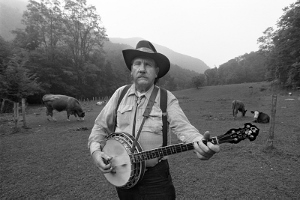
One of the most fascinating of all the two finger pickers is a gentleman by the name of Walter Davis. Residing in Black Mountain, North Carolina, Walter, in his 75 years, has come to know most of the western Carolina banjo players such as Samantha Bumgarner, Mack Crow, Clarence Ashley and Dock Walsh. He was also acquainted with Jimmy Rodgers, who once lived in Old Fort, North Carolina, and Blind Lemon Jefferson, who played on the streets of nearby Johnson City, Tennessee. He also knew Jimmy Davis, who came to visit his mother in a hospital in Morganton, North Carolina,



